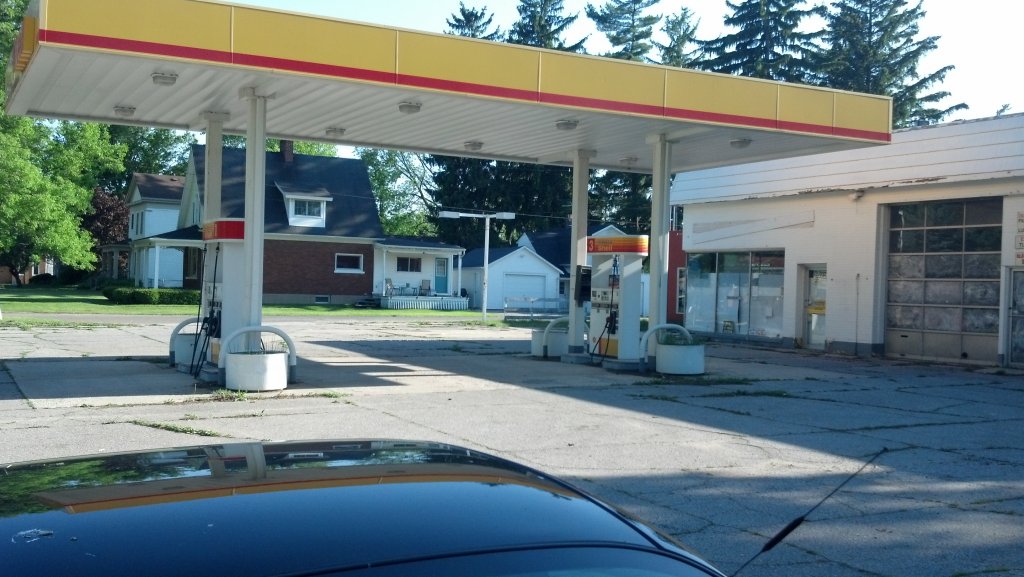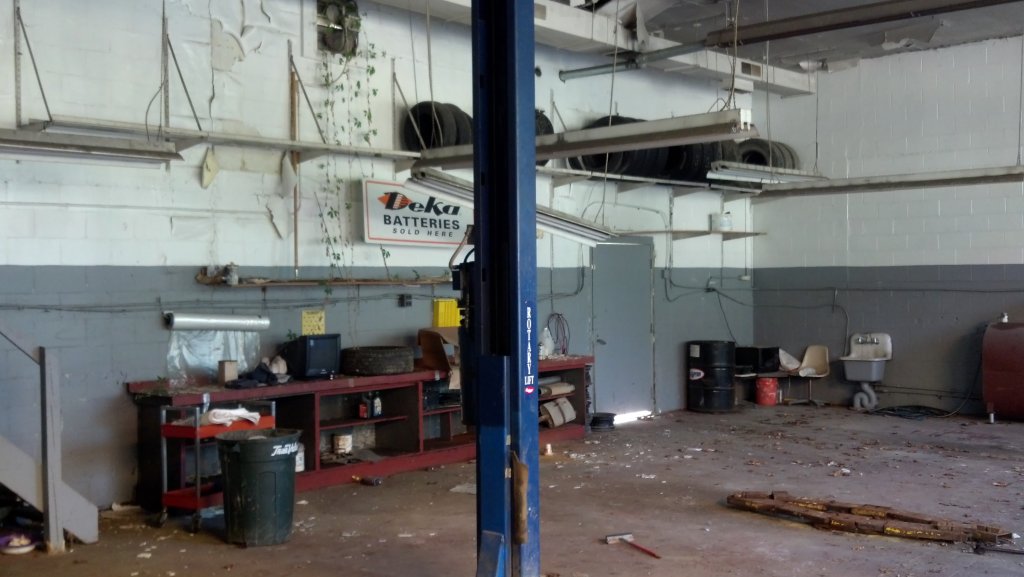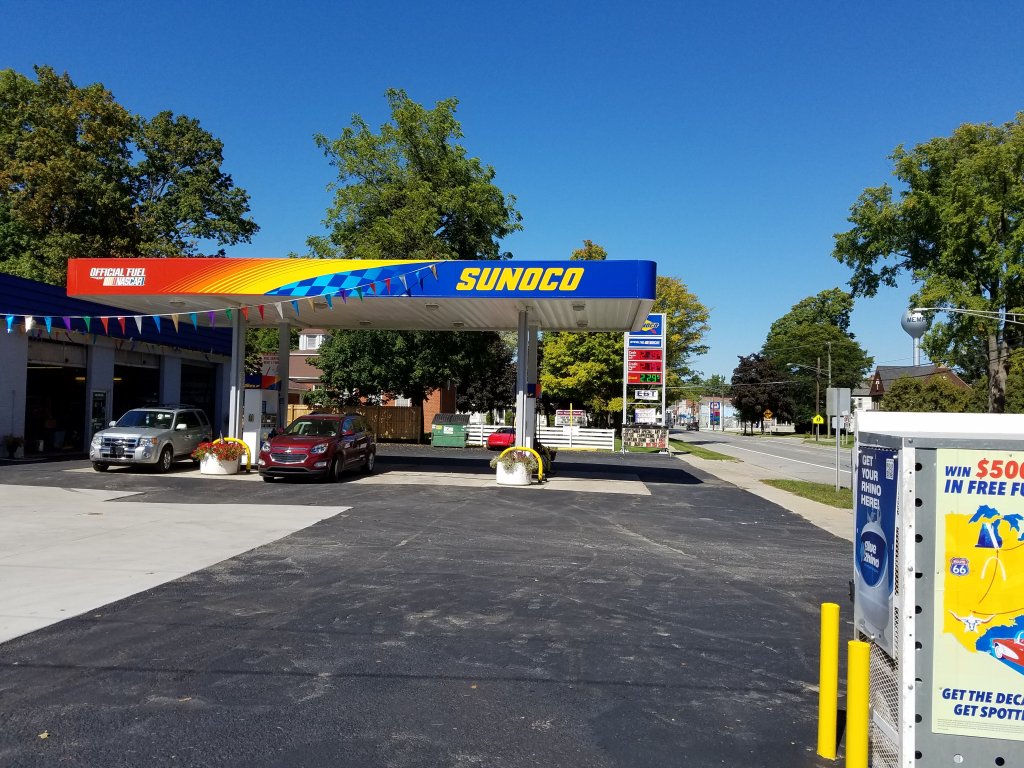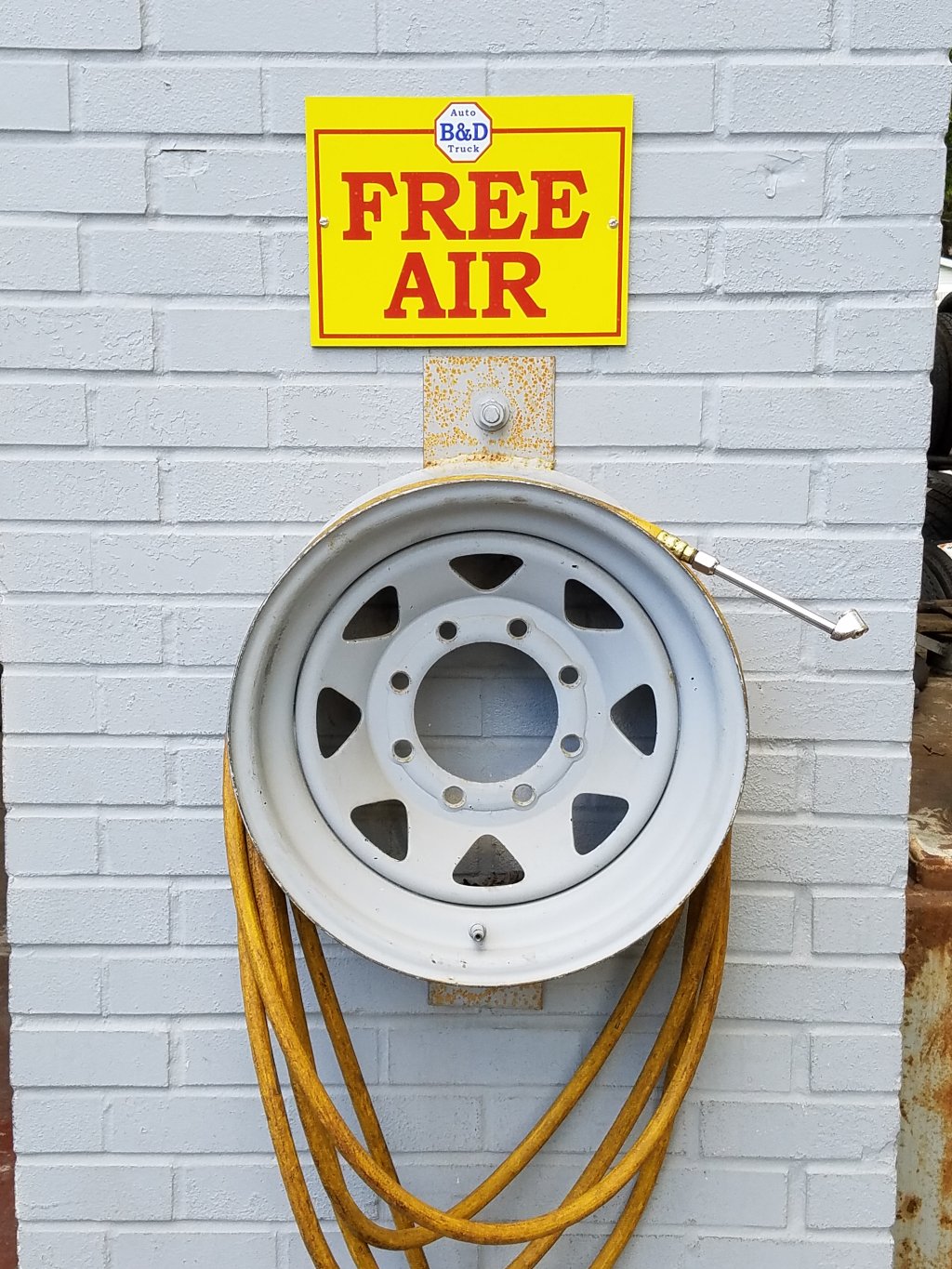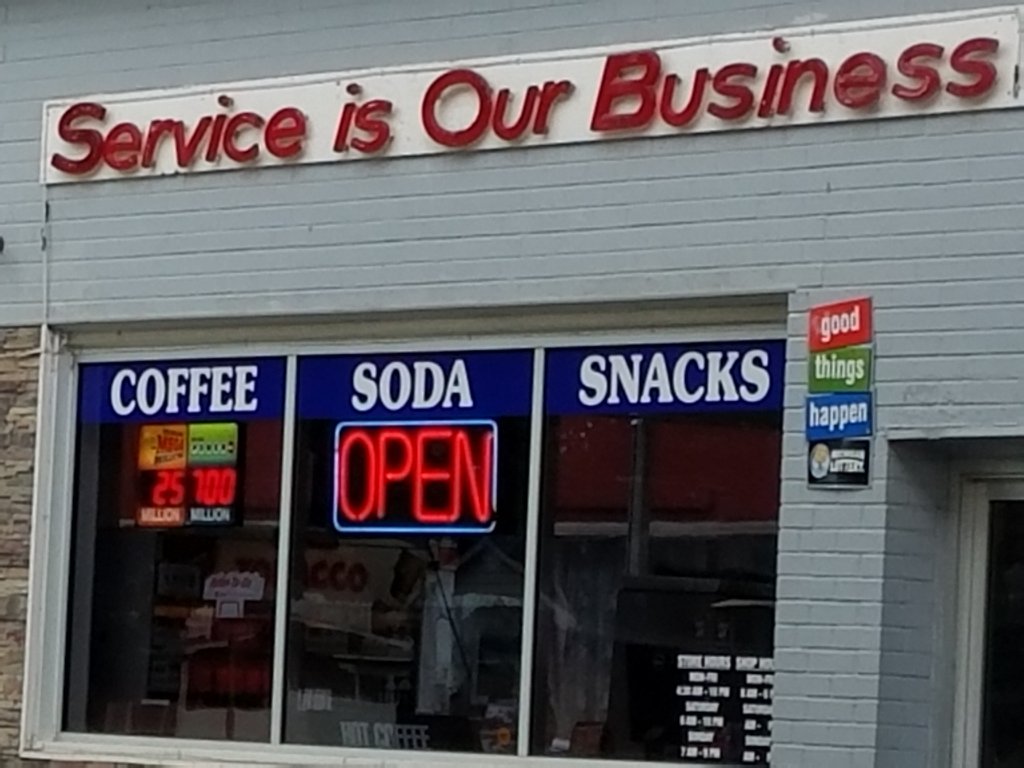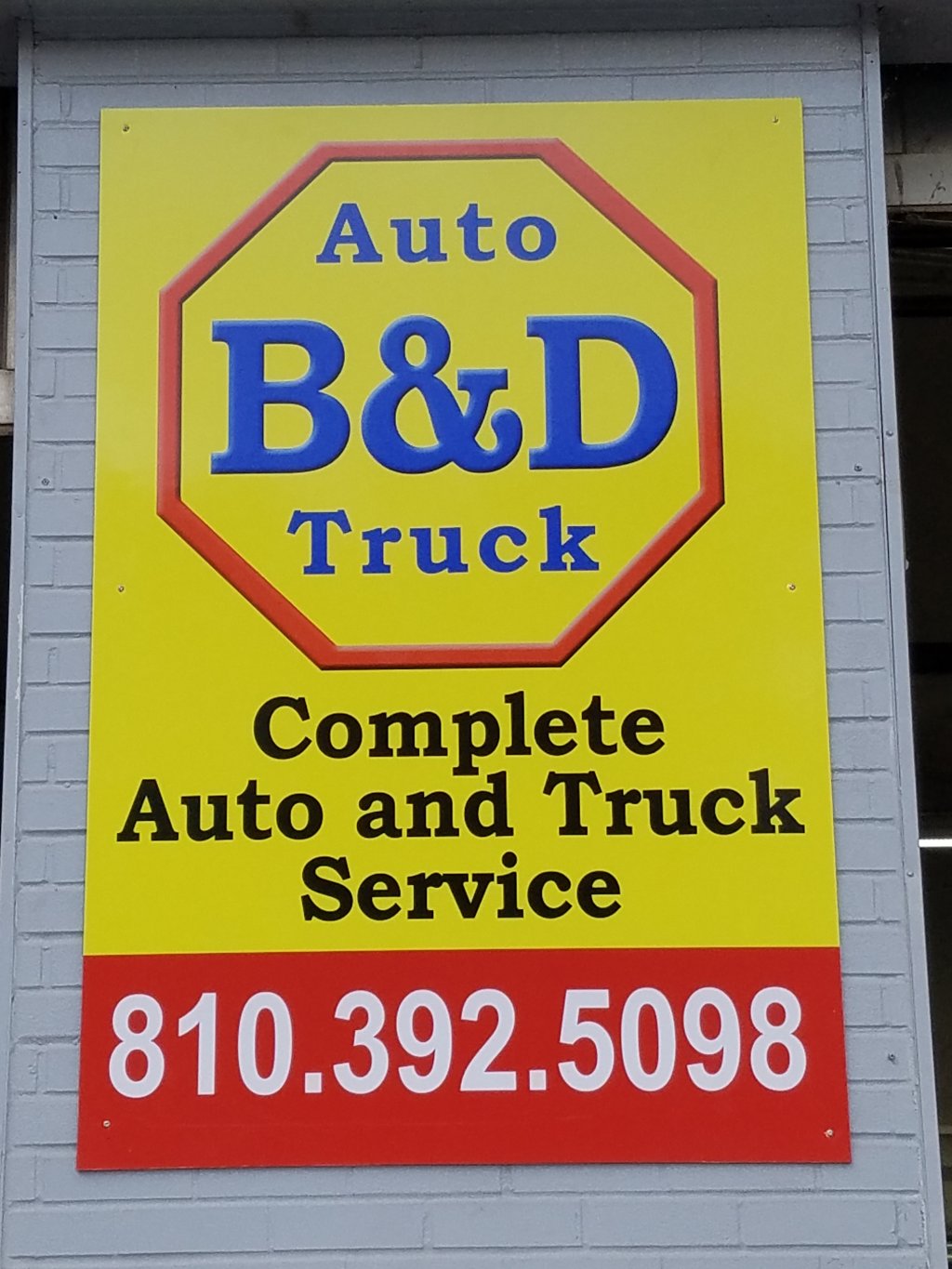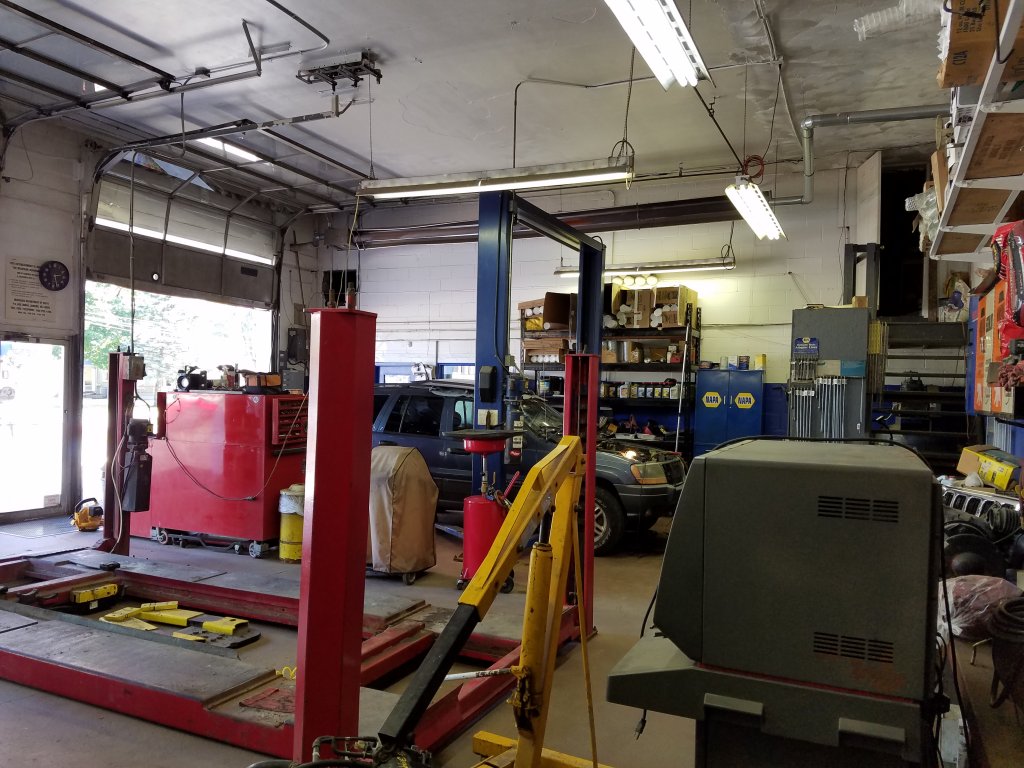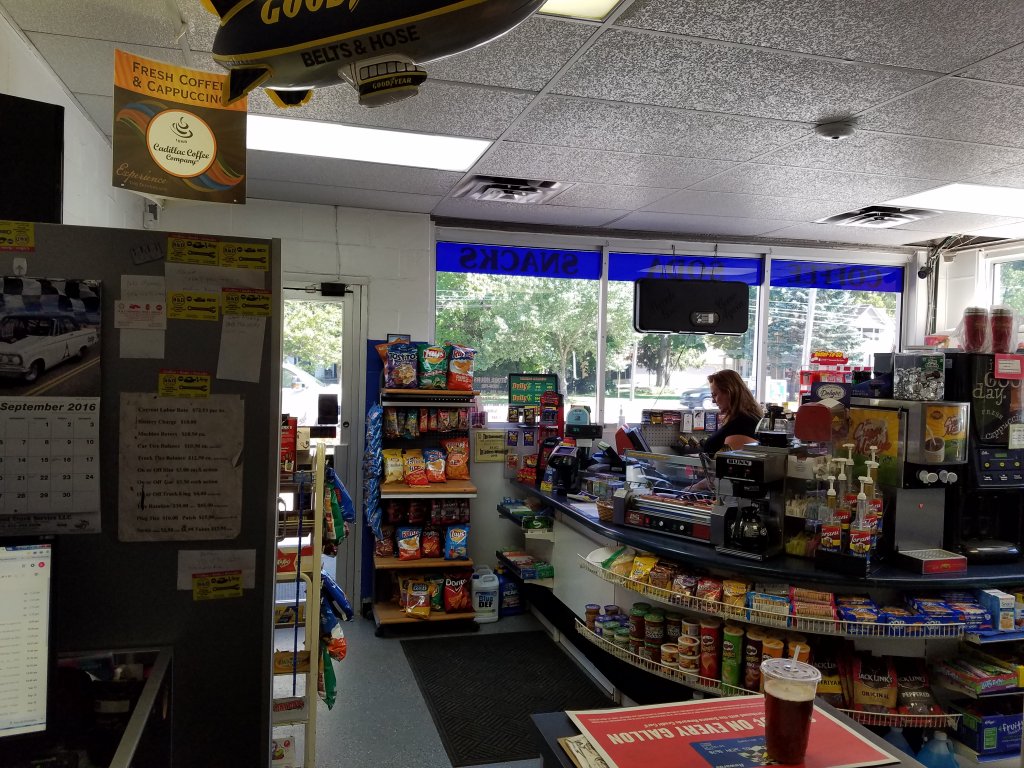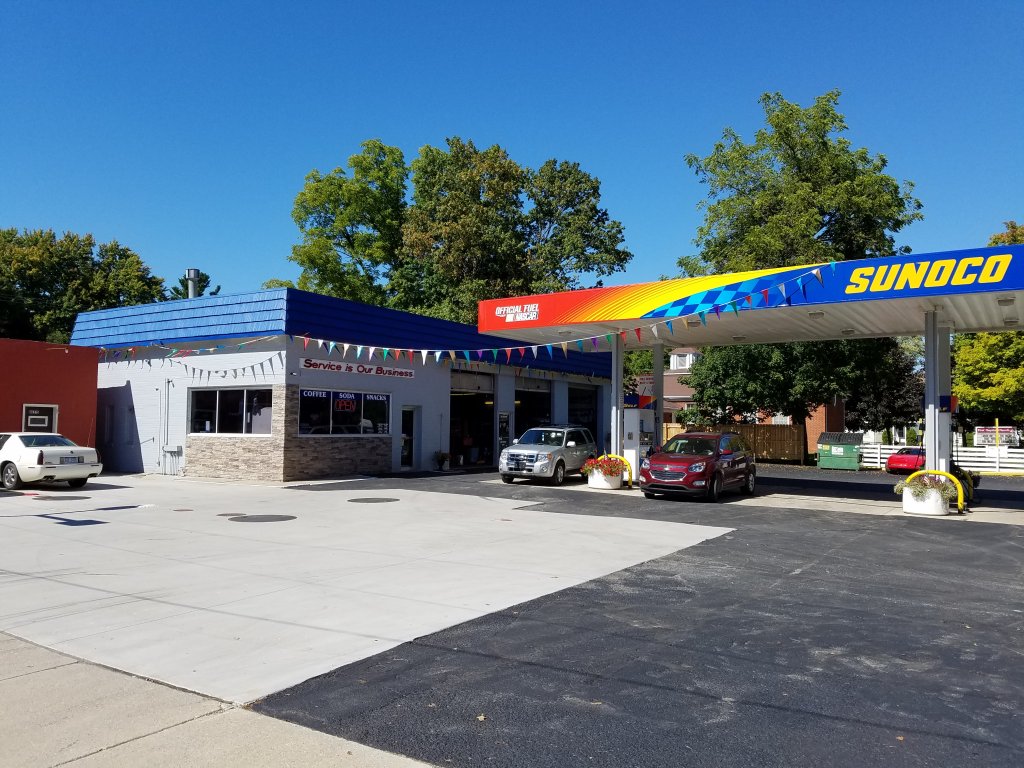Fuel Savings Tips As Gas Prices Soar
With gas prices exceeding three dollars a gallon in many parts of the country, the Car Care Council is offering gas-saving maintenance and driving tips that really work:
| $ | Check vehicle gas caps - About 17 percent of the vehicles on the roads have gas caps that are either damaged, loose or are missing altogether, causing 147 million gallons of gas to vaporize every year. | | $ | Make sure tires are properly inflated - When tires aren't inflated properly, it's like driving with the parking brake on and can cost a mile or two per gallon. | | $ | Replace spark plugs regularly - A vehicle can have either four, six or eight spark plugs, which fire as many as 3 million times every 1,000 miles. That results in a lot of heat and electrical and chemical erosion. A dirty spark plug plus causes misfiring, which wastes fuel. Spark plugs need to be replaced regularly. | | $ | Replace dirty air filters - An air filter that is clogged with dirt, dust and bugs chokes off the air and creates a "rich" mixture - too much gas being burned for the amount of air, which wastes gas and causes the engine to lose power. Replacing a clogged air filter can improve gas mileage by as much as 10 percent, saving about 15 cents a gallon. | | $ | Fuel-saving driving tips include: |
| Don't be an aggressive driver - Aggressive driving can lower gas mileage by as much as 33% on the highway and 5% on city streets. | | $ | Avoid excessive idling - Sitting idle gets 0 miles per gallon. Letting the vehicle warm up for one to two minutes is sufficient. | | $ | Observe the speed limit - Gas mileage decreases rapidly at speeds above 60 mph. Each mile driven over 60 will result in an additional 10 to 34 cents per gallon. To maintain a constant speed on the highway, cruise control is recommended. |
“Reprinted with permission from the Car Care Council.”
Inspection Point
A few maintenance and safety inspections can keep you and your car working together for a long time. OilThe best time to check your engine's oil is when the engine is warm to the touch and engine not running. To check the oil, locate the dipstick; most dipsticks will be labeled as "oil." Pull the stick out and wipe the oil residue off the end. Replace the stick and pull it out again; this time look at the end of the stick that was in the engine. You want the oil to be on the "full" line, if it's significantly below the line, take your car to the shop for an oil change and ask them to look for a leak. Also, make sure the oil is clear and fluid. If your oil is black and jellylike, take it to your technician immediately to check the engine.
Transmission Fluid Transmission fluid keeps your car changing gears smoothly. Checking it is just as simple as checking the oil. Look under the hood for the dipstick labeled "transmission." Repeat the same steps as checking the oil, except the engine must be running. You want the transmission fluid to be smooth and clean with no metal flakes. If you find chunks or flakes of metal attached to the dipstick, take your car to your technician.
Battery An easy way to check the battery is to put a voltmeter across the terminal. You can also do a visual check of the battery terminals. You are looking for clean terminals with no corrosion buildup. With the car turned off and the battery disconnected, poor some baking soda mixed with water on the terminals and let it settle for a few seconds; take a steal brush and start scrubbing. This will remove the corrosion. A good connection increases the electricity flow.
Air Filter The cleaner the air filter, the more air that flows into your car's engine, which gives you better gas mileage. Checking the filter is simple. Locate your air filter under you hood (use your owner's manual if you need assistance). Open the container and remove the filter, check to see how much dirt and dust the air filter has collected. If it's still mostly white, you should be OK. If it's black or brown, it's time to replace the filter. Usually, it's a good idea to change it at every other oil change.
Radiator Fluid Make sure the car has been turned off for a while; the radiator cap will be hot if the engine has recently been running. (Newer cars have a plastic reservoir for engine coolant, which should be filled to the "cold engine" or "hot engine" line). Once the cap has cooled, simply unscrew it and if you see coolant, you are good to go. If not, you will need to add an antifreeze/water mixture.
Lights This is a simple but useful task. Check all your lighting functions (headlights, brights, taillights, brake lights, both turn signals -- front and back -- and emergency lights). If you see that a light is burned, your local auto technician will have a replacement.
Tires Your tires are the only connection you have to the road, so you want to make sure they are working properly. First, get a pressure gauge and a penny. Measure the pressure of each tire; check your owner's manual for the recommended pressure of the tires (usually 30 to 34 pounds). Next, take the penny and place it into the tread of the tired with Lincoln's head pointing down into the tread. If the tread does not at least come to the hair on his head, you need new tires. Don't forget to check your spare tire as well; make sure it's inflated and has no damage.
Roadside toolbox Always make sure your car toolbox is complete. Also, depending on the length of your trip and time of year, you might want to pack a few extra things. For example, in the winter leave a spare blanket or jacket in the trunk.
Tips To Take Care Of Cars During Tight Times
The lack of available credit and desire to spend in today’s economy has caused individuals to hold on to their cars longer. Surveys showed consumers kept their vehicles four months longer in 2008 compared with 2007, up from 67 months to 71 months. The following tips can keep your car in shape for every budget during tough economic times. $0 Budget: • Read the owner’s manual. Educate yourself about your car and follow the maintenance recommendations. • Park the vehicle in the same spot every day. Look for signs of fluid leaks under the car. Check the fluid levels under the hood regularly, but especially if you see signs of leaks. Identifying minor problems early can eliminate bigger problems down the road. • Be a kinder, gentler driver. A significant amount of wear and tear is generated by abrupt starts and stops, especially if the car is used primarily for city driving. Take it easy on the brakes and transmission and your car will return the favor. • Inflate the tires. By simply keeping tires inflated according to manufacturer’s guidelines, the car will operate more efficiently and improve gas mileage. Less than $100: • To get better gas mileage and extend the life of the engine, change the oil and filter every 3,000 to 4,000 miles. By doing this, today’s engines should have no problem reaching 200,000 miles. • Air filters stop contaminants from getting into the engine which could cause damage. A clean filter promotes proper, unrestricted air flow and improves gas mileage. • Practice a little psychology. In keeping the vehicle clean, you will be less likely to think of it as old or neglect basic maintenance items. Consider adding an accessory that you have been wanting on a new car, such as a GPS or satellite radio. Between $100 - $500: • Keep the engine tuned. A fouled sparkplug or restricted fuel injector can reduce fuel efficiency as much as 30 percent. • Follow maintenance recommendations for belt replacement. This is often expensive, but more so if maintenance is neglected, which can cause catastrophic damage to the engine. • Take care of needed repairs promptly. If something wears out or stops working, get it fixed. Neglecting a brake wear warning indicator is not only jeopardizing safety, but can also lead to a domino effect of additional failures. Also, beware of making only partial or temporary repairs. Doing so only addresses the immediate need, but can lead to more serious damage over time.
Don’t Fall Asleep On The Road
Fatigue on the road can be a killer, especially when you’ve been driving on the open highway at night. Many refer to it as “highway hypnosis,” when the road seems to never end and it starts to lure you into a far-off gaze. The problem is, you’re behind the wheel and lives are at stake. Something needs to be done. You have to turn off at the next exit, shut the car down and try to take a nap or head for the nearest hotel. The following are a few tips on what to do if you find yourself nodding off.
 | Get enough rest. Never start a trip late in the day. Long-distance driving is tough and you need to be ready and awake. |  | If possible, don’t drive alone. Passengers can take turns driving, talking to each other and keeping each other alert if need be. |  | Avoid long drives at night. |  | Adjust your car’s environment so that it helps keep you awake and alert. Keep the temperature cool, with open windows or air conditioning in the summer and frugal amounts of heat in the winter. |  | Watch your posture. Drive with your head up and your shoulders back. Tuck your buttocks against the seat back. Legs should not be fully extended, but flexed at about a 45-degree angle. |  | Take frequent breaks. Stretch; it’s a good thing. |
Tips To Keep In Mind
Bad driving habits have an impact on your car and the environment.
 | Avoid high speeds. Fuel efficiency decreases significantly at speeds over 65 miles per hour. |  | Drive smoothly. Smooth driving saves gas and lowers vehicle emissions. Avoid jack rabbit starts, hard cornering, and quick stops if at all possible, these actions cause undo wear on critical vehicle components which can be costly to repair. |  | Don't rev the engine. It serves no functional purpose, and wastes gas. It also increases engine wear and can cause severe engine damage. Revving can also overheat the vehicle's catalytic converter, which makes it less effective and can damage it. |  | Keep vehicle properly maintained. Under-inflated tires decrease gas mileage and shorten tire life. A plugged up fuel filter can ruin your fuel pump. Keep gas tank more than ¼ full to prevent fuel pump from overheating. Rotate your tires every other oil change. Scheduled oil changes are the single most important thing you can do to extend the life of your vehicle. Let your vehicle completely warm up before you start driving. Have a maintenance inspection done on your vehicle at least once per year. |  | Pay Attention. Listen to the noises your vehicle makes, an unusual noise could be the beginning of a serious problem and should not be ignored. Fixing a noise now could save you from more costly repairs later. |  | Warning Lights. Today’s vehicles have several warning lights, ABS, CHECK ENGINE, OIL, etc…to alert us of a malfunction. If a light illuminates on your dash, you should have it checked and repaired by a qualified technician. |
Check Tire Inflation Levels
Because so many summer travelers simply jump into their vehicles and drive while being blissfully unaware of the only part of their cars that comes in contact with the road – the tires – we would like to urge motorists to take a few minutes to either inspect their tires themselves or visit B&D Auto and Truck Service for a check-up. The increase in the price of gas is even more incentive to check tire condition and air pressure before heading off on any vacation journeys. Under-inflated tires can increase fuel consumption, costing motorists extra miles per gallon. In addition, you should avoid over-inflated tires, or those with insufficient tread depth or structural damage, as these are substantial safety hazards. The U.S. Department of Energy has reported that every pound per square inch of tire under-inflation wastes 4 million gallons of gas daily in the U.S. At today’s prices and with millions of vehicles on the road, that amounts to a huge expense. An under-inflated tire doesn’t roll as smoothly or as easily as it was intended, so it uses more energy, heats up more due to friction, and breaks down structurally more quickly, robbing the vehicle of fuel efficiency and tire life. When motorists are aware of this, they realize why tire maintenance is so important. Tires should be inflated to the vehicle manufacturer’s recommendation printed on the door placard or in the owner’s manual, not the maximum limit stamped on a tire sidewall. The inflation pressure of tires should be checked at least monthly and before any long trips.
Cooling Down A Hot Car
Auto accessory company Axius determined that on a 95 degree Fahrenheit day, trapped hot air inside your car can make the dashboard hot enough to fry bacon and eggs! The steering wheel can reach 159 degrees, and the seat, 162 degrees. To keep your car as cool as possible, try these tips:
 | Park in the shade whenever possible. |  | Cover your steering wheel with a towel when you park. |  | When you get into a hot car, open windows and the sunroof to let out the hot air. Turn on the air conditioning, and select "recirculate" for faster cool-down. |  | Use sunshades, which Axius says can reduce heat buildup by more than 48 degrees F. |  | Consider getting your windows tinted. (Check with local law enforcement for rules on how dark the tinting film can be. |
Avoid An Accident Don’ts
According to the National Highway Traffic Safety Administration (NHTSA), there have been on average 41,000 highway fatalities in the U.S. per year since 1993. Sadly, a great many of these deaths could have easily been avoided. Here are some don'ts that can help minimize your chances of becoming a statistic.
Don't eat or drink while driving: There are two problems with eating. First, it keeps you from using both hands. Second, you lose your ability to focus on driving. The best advice is to forget about eating your hamburger and drinking your coffee until you get to a place made for that purpose.
Don't smoke: Like eating and using your cell phone, smoking limits your movement and thus your ability to operate a vehicle. But cigarettes carry another risk as well: Driving is hard enough without having to put out fires simultaneously.
Don't keep loose objects in your car: A messy car could be a hazard if you have to brake quickly. Objects could slide or roll under your brake pedal. Things sliding about in your car means you won't be able to give your full attention to the road. At worst, one of those same things could cause you to lose control of the car.
Don't tailgate: While driving, you should be able to see the back tires of the car in front of you. If you're traveling at a higher speed, maintain a further distance, enough so that you can see its side mirrors. The general rule is, the more space, the better. If you're the one being tailgated, the best policy is to signal to him to go around; the further away you are from him, the better.
Celebrating? Choose Your Ride!
By Presidential Proclamation, December of each year is designated National Drunk and Drugged Driving (3D) Prevention Month. It is the most popular month for serving alcohol at parties, family gatherings, and social events. That makes December the most dangerous time of the year for alcohol-related traffic accidents and fatalities. Think about this: An alcohol-related motor vehicle crash kills someone every 31 minutes in the U.S. and nonfatal crashes injure someone every two minutes according to National Highway Traffic Safety Administration statistics for 2004. That's the annual average, but statistics for December show it to be more dangerous than other months. Most people enjoy holiday drinks, but driving home after a party can be a disaster. You can have your fun and stay safe if you arrange to have a designated driver, someone who will not be drinking and who can drive you home after the party. Your responsibility, however, does not end there. When you see that a person who doesn't have a designated driver is intoxicated, arrange a ride or drive him/her home yourself. Friends don't let friends drive drunk
Winter Checklist
Just as you must make changes in late autumn to prepare for winter, consider the following checklist as your strategy to prepare your vehicle for the rigors of the season.
Antifreeze Check Most antifreezes are an ethylene glycol based fluid with low freezing and high boiling points when mixed with water. The rule of thumb for changing the fluid is simple: if you didn't change it last winter, do it now. The recommended lifetime is two years or 30,000 miles, whichever comes first for most vehicles. Even if the fluid looks relatively fresh, antifreezes include chemicals that lubricate water pumps and inhibit engine corrosion.
Oil Check See your owner's manual for the manufacturer's recommended winter rating. If you use thicker oil for severe summer driving conditions, this is the time to change the oil and switch to a thinner weight.
Wiper/Washer Check As for wipers and washer fluid, if your wiper blades are marginal, they probably won't hold up well under the assault of salted-road slush. Most washer solvents are good to 10 degrees below zero, which is usually adequate. Check your windshield for dings, because this is a good time to have them repaired. The combination of cold air temperature and a warm auto interior can quickly escalate a ding into a serious crack. While we're on the subject of a warm interior, don't forget to check your heater.
Battery Check If your battery is within a year of its life expectancy, have it tested. It's far easier to deal with an aging battery on a pleasant fall weekend than a totally dead one in the dreary dark of winter.
Tune Check Your vehicle can use all the help it can get during the coming months. A new set of plugs, distributor cap and rotor (if applicable) and ignition wires will give you better, quicker starts.
Belts/Hoses Check Cracked, frayed or worn rubber may not make it through the winter. Freezing temperatures and winter driving conditions put an added strain on the engine parts.
Tire Check Driving on packed snow and ice-riddled roads requires as much traction as your tires can deliver. If your tires' footprints look thin, a new set is in order. Be very particular when inspecting the tread of the rear tires on rear-wheel drive/front engine vehicles. This is where you really need the grip. Keep in mind that unless you're loaded down with cargo in the trunk or truck bed, there's not much weight back there to help in the traction department.
Exhaust Check If you've got a carbon monoxide leak in your exhaust pipe, you could be in real danger. With the heater on and windows shut tight, a fume leak can be fatal.
Once you've run through this checklist, you should be pretty much ready for winter driving -- and can make it over the river and through the woods with a lot more peace of mind.
Keep Tires Inflated to Save Gas
The Goodyear Tire & Rubber Co. estimates that under-inflated tires waste four million gallons of gas daily in the United States. Let us check your tires once a month or use your own pressure gauge because air meters at gas stations can be inaccurate. You should have each tire inflate to the pressure recommended in the owner’s manual.
Tips For Parents Of New Drivers
Nationwide, car accidents are the leading cause of death for young adults between the ages of 15 to 20. State patrol troopers across the country are recommending that young drivers take driving courses. The average $300 it costs for the class will more than make up for the expenses incurred in the first accident and could even prevent it. The following are a few tips for parents who want to keep an eye out for their children. | Keep driving sessions short but frequent, about 15-20 minutes each day, slowly working up to an hour. |  | Lead by example. Examine your own driving habits to see if there is anything that can be corrected. |  | Try not to criticize teens while they are driving. Talk to them when they are no longer behind the wheel. |  | Urge your children not to take unnecessary risks, whatever the situation. |
The General Lee
By now, The Dukes of Hazzard and the orange '69 Dodge Charger called the General Lee are as much a part of American culture as hamburgers and pickup trucks. And everyone knows the theme song. But Indianapolis disc jockey Travis Bell has taken enthusiasm for The Dukes well beyond mere fandom. This guy has crossed into the realm of obsession. Already a co-founder of the North American General Lee Fan Club and the owner of a General Lee replica, Travis solidified his status as king of the Dukes fans in 2003 when he took an orange '69 Dodge Charger down to Covington, Georgia (where the first episodes of the TV series were shot), put one of the original stuntmen from the show in the driver seat and sent it flying in celebration of the 25th anniversary of the 1970s TV show. Last year, however, Travis truly secured his place in Dukes history with his complete restoration of the very first Charger to ever portray Bo and Luke's beloved General Lee. Over 17 months, Travis transformed "Lee 1," as it was literally labeled by Warner Bros. back then, from a lump of mangled Mopar metal sinking into the red Georgia clay, into what could be the most valuable 1969 Dodge Charger in the world. Although 320 additional General Lees were used and often destroyed during filming of the TV series, Lee 1 is the only General Lee to appear in every episode of the seven-year run of the popular TV show. It's the car that launches itself up a dirt mound and over that '74 Dodge Monaco squad car at the end of the opening credits. — 16 feet up and 82 feet out. It landed on asphalt, nose first, folding each front fender and putting a crease across the floor pan and sills just behind the firewall, an undignified end to a short but brilliant career. The General Lee(the original one now resurrected) may have been indestructible, but the cars that portrayed it were not.
An Automotive Gift For Mother's Day? You Bet!
With Valentines Day behind us, it's not too soon to begin thinking about Mother's Day. One place to look for useful ideas is from the driver's seat of the car, especially if Mom spends a lot of time behind the wheel. Her vehicle is her home away from home and gifts that enhance her enjoyment of that second home are likely to be appreciated, suggests Rich White, spokesperson for the Car Care Council. "We tend to gravitate toward gifts like jewelry, a framed photo or flowers," he says. "But why not break from the traditional and dress up her car? Maybe she's always wanted a sun roof or has admired someone's wood grained dash trim. Her wish could come true, with the help of your local auto specialty shop." White suggests that, beyond the obvious gifts such as a car phone or floor mats, Mom might appreciate having her damaged steering wheel replaced with one that's stylish, possibly leather covered. Her sun-damaged and faded padded dash could be repaired, replaced or recovered to upgrade the interior. "Security devices such as a remote keyless entry or alarm systems are popular add-ons," says White, "as are custom wheels or wheel covers. Women usually are interested in safety and appearance accessories, as opposed to those which are performance related. Gifts can be inexpensive, too. Those net shopping bags, for example, that hook on back of the driver's seat, are great gift items."
“Reprinted with permission from the Car Care Council.”
Towing Guidelines
Follow these tips from trailer retailer Trailers for Less for safe towing of trailers: | Keep your car or truck well maintained, since towing adds stress to the towing vehicle. |  | Practice before driving on main roads. |  | Don't allow anyone to ride in or on the trailer. |  | Before taking to the road, check routes and restrictions on bridges and tunnels. |  | Drive at moderate speeds. The trailer is more likely to sway at higher speeds. |  | Avoid sudden stops and starts that can cause skidding, sliding, or jack knifing. |  | Slow down on bumpy roads. |  | Make wider turns at curves and corners to prevent the trailer's wheels from hitting or riding up over curbs. |  | Allow more distance for stopping. |  | When you uncouple the trailer, place blocks before the front and rear tires to make sure that it doesn't roll away. |
An Ambulance Or An Auto
Is it better to call an ambulance or ask a friend or family member to drive someone to the emergency room? The American College of Emergency Physicians urges you to ask yourself these questions:
 | Is the situation potentially life-threatening? |  | Could it become worse or life-threatening during the drive? |  | Do you need special equipment or skills to move the patient? |  | Could traffic or distance slow your trip to the emergency room? |
If the answer is yes to any of these questions, call an ambulance. Emergency medical technicians have the skills and equipment to begin treating many illnesses or injuries on the way to the hospital. Plus, they can alert the hospital that the patient is coming, and, unlike a family member, the ambulance driver can focus fully on getting there.
Driving After Dark
The American Optometric Association urges drivers to take special precautions to compensate for their reduced visual acuity at dusk and nighttime:
 | Reduce speeds at night. |  | Consider stronger prescription lenses to see at night. |  | Use headlights not only at night but at dawn and dusk. |  | Keep windshields and windows clean, and make sure headlights and wipers are in good working order. |  | Have regular, thorough eye exams. |
Build Your Own Hybrid
Robert Q. Riley Enterprises, a product design firm in Glendale, Ariz., has released construction plans for anyone who wants to build its XR3, a two-passenger, plug-in hybrid that can travel up to 225 miles per gallon. The three-wheel sports car’s modular design can be outfitted with different power trains to create a 125-mpg, diesel-only vehicle; a 100-mile-range, battery-only vehicle; or a hybrid for increased performance and fuel versatility. Since no computer controls are needed on the hybrid system, costs are reduced and the need for re-programming is eliminated. “During the two years it took to develop the XR3, we received more than 2,500 advanced orders for the plan set,” states Riley company president and author of “Alternative Cars in the 21st Century.” In addition to conventional printed drawings and instructions, the do-it-yourself plans include electronic 3D models that can be viewed on a PC, computer files vendors can use to make parts, and a DVD that shows the car being built. The plans cost $200. “We’ve taken CAD technology used by today’s designers and put it in a form that anyone can use,” adds Riley, whose alternative vehicle designs have regularly appeared in how-to magazines. “Not only is there nothing like the XR3 coming from the world’s carmakers, there’s nothing in the DIY field that’s even close to the information technologies we’ve used in the XR3 plan set.” The XR3’s Li-Ion battery pack can achieve 80 percent of its full charge in just 1.5 hours by plugging into an ordinary wall outlet, according to the company. Although 40-50 miles is possible on battery power alone, switching the car to diesel power and its three-cylinder engine can result in up to 375 miles on a mere three gallons of fuel. Robert Q. Riley Enterprises, LLC is a full-service product design and development consultancy, specializing in transportation, recreation, fitness and medical products. For more information or to order plans, visit www.rqriley.com.
Safety Group Wants Black
Boxes In All Cars
The National Highway Traffic Safety Administration (NHTSA) wants black box recorders in cars to collect data that will help crash investigators. By September 2008, NHTSA wants recorders to collect up to 42 data elements. About 15 percent of vehicles now on the road have the data recorders. Between 65 and 90 percent of 2004 vehicles, including all General Motors and Ford Motor Co. cars, have some sort of recording ability. The data collected from these systems, however, vary widely. And because there is no standard technology for accessing the boxes, crash-scene investigators have difficulty recovering information that could help them determine why an accident occurred. At Ford, the systems were originally designed for internal use by the company. Ford technicians could then check the information to make sure the vehicle performed correctly in the event of a crash. The NHTSA wants a federal mandate to standardize information and access. Boxes on cars collect far less information than those on commercial airlines and store much less of it. They don't record audio from inside the car, for example. Those in cars are a tiny module attached to electronic sensors embedded in the car. They store information about the vehicle's performance in the seconds before a crash. The American Civil Liberties Union says the owners of vehicles should be told that the recorders are in their cars, and they should be able to disable them.
Tire Pressure Drops
In Cold Weather
Monitor your tire pressure twice a month in winter because freezing temperatures reduce pressure. According to the Goodyear Tire and Rubber Company, a tire inflated at 32 pounds per square inch (PSI) on a 70-degree Fahrenheit day will register at an under-inflated 26 PSI in cold weather. A properly inflated tire provides optimum traction, which is crucial on icy or snowy roads. It will also last longer.
Cruise Control Warning
Traffic safety experts warn against using cruise control under icy, snowy, or wet conditions. Cruise control needs traction to work; without it, your car can accelerate 10 to 15 miles per hour faster than the speed set on the cruise control.
Traveling Light
The National Highway Traffic Safety Administration says that thousands of people would survive or sustain fewer injuries in collisions if it weren't for unrestrained cargo in cars. Examples of dangerous "projectiles" include groceries, umbrellas, cell phones, golf clubs, tools, and even pets and unbuckled passengers. In a 35-mile-per-hour head-on crash, a tin can could hit someone with 100 pounds of force, enough to fracture a skull. People in sport utility vehicles and station wagons are particularly at risk because these vehicles don't have trunks. The administration recommends the use of cargo dividers, the cage-like devices that separate the passenger area from the back of the vehicle.
Teens And Cars
According to the National Highway Traffic Safety Administration, teenagers have the highest fatality rate from motor vehicle crashes than any other age group, and motor vehicle crashes are the number one cause of death among Americans 15 to 20. NHTSA believes these statistics reflect the fact that many teens drive small used cars because they can't afford more expensive models. Safety experts urge parents to help foot the bill for a safer vehicle, if necessary.
Here's a list of criteria for the ideal car: | A four or five star NHTSA safety rating for front and side crashes, and four or five stars for rollover rating. |  | A weight of at least 3,300 pounds. |  | An ability to go from 0 to 60 miles per hour in eight to 11 seconds. |  | Safety features, such as anti-lock brakes, traction control, front and side air bags. |
Vehicles that don't typically meet these criteria include sport utility vehicles, sports cars, compact cars, small pickup trucks, and convertibles. "Ideally, you want your teenager in a large, sedate sedan," says Jeffrey Runge, NHTSA administrator. How To Cover A Car's
Value Insurance GapThe cost of buying a sports utility vehicle and many other types of cars can be $35,000 or more. If the vehicle is wrecked or stolen within the first year, your insurance company may say it's a used car and is now worth just $26,500. You have lost $8,500, and you'll probably have to pay the difference almost immediately. The consumer advice editor at edmunds.com, a car-buying Website, says that when you buy a new car, it's worth 20 percent less as soon as you drive it off the lot. By the end of the first year, depending on how well the vehicle holds its value, it can depreciate by as much as 35 percent. Because loans for many expensive cars, SUVs, and trucks extend for five or six years, many buyers may be "upside down" in value versus loan balance for two years or more. For many owners of newer cars, GAP insurance can offer needed protection. GAP stands for guaranteed auto protection and |
